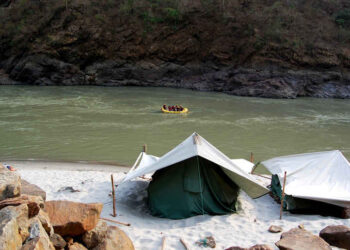The other day I was trying to remember what vegetable shopping in a mandi used to be like. It has been ages since I went vegetable shopping in a mandi- the cacophony of vegetable sellers calling out to folks walking past mounds of vegetables. The squish and dampness of mud beneath my feet in the rainy season as I manoeuvred through the maze of the mandi.
Each seller would be different from the other. All vying for my attention with a smile, a gesture, a call. Fleeting relationships formed in a moment through the eyes, conversations about where the vegetables are grown, which gaon, which khet (farm). How some vegetables are seasonal, and some you can find all year round. So much colour, muck, noise, dust, smell, flavour.

And there’s now. I go to a supermarket where vegetables lie prone in freezing sections like well-manicured glossy bodies in a mortuary. They look abandoned with no one to tell me where they’re grown if they’re fresh or not. I have to feel my way through each pile. Use my hands to assess tautness, ripeness, readiness. But there’s only so much my body can sense. Vegetables in supermarkets are rendered contextless in the sterile, sparkly rows. I don’t sweat, talk, fumble my way to them. I pick them, assessing what criteria of freshness, appeal, colour, or smell they meet and what they fall short of. I tick off a mental list in my head; I choose, I reject.
And that is so much like being on a dating site these days, no? Swipe right, swipe left. Does he travel, does she read, is he into fitness, is she pretty and has long hair? Does he like dogs? Does he own a house or a car? Has she been married before, what age is she? Does he drink, smoke, party? Is she stylish? Does she wear makeup? Mental lists roll off our eyes as we swish our way to the next and next profiles.

Each profile is like a shop window where the best of what is available is on display. And of course, that is good because we know so much more about who is open to date or not. But in that looking through the shiny phone/window screen, we see people in isolation, standing firmly outside the messiness, the beauty and the complexity of their contexts.
And none of this is bad. But it is limiting. The process reduces us to a promising candidate in interviews with just the right degrees, looks, or confidence and style. In those few minutes we spend looking at CV/profiles, can we know who can hold steady in the middle of a crisis? Or who can listen or hear you without waiting to supply a response that offers a suitable solution? Can we know in those brief moments or days or weeks we take to chat up one person and then another if someone will add to the richness of our life or dampen it? Or if someone arouses laughter and curiosity in us or makes us feel unseen, unheard? Who do we feel alive and vibrant around, and who dampens the air around us? Whose story can we work with to weave our story into whose story is perhaps too complex for us to comprehend or honour bravely, with compassion?
And you’ll wonder if this knowledge is at all possible in the current environment of dating and meeting people. Maybe it isn’t easy, and of course, it means that one will need to pause enough to get to know a person and how they show up in different areas of work, life, enjoyment, pleasure. What is he like around elderly colleagues? Does she have long-standing friendships? What is he like around children, and does he like spending his weekends outside? Do animals excite her? Do her eyes grow curious at the sight of something unexpected? How do they figure their way out of a crisis? Do they blame, rant, scream, or pause, grieve, ask for help, and try?

Can we know any of this without pausing enough to let that person in and out of our lives for some time? And can we go about this knowing not using these questions as assessment criteria and benchmarks we measure the other against
This kind of knowledge is hard. It is undoubtedly like slow cooking on wood fires and not ready to eat microwaveable meals. And it is that much harder for us to sift, sieve, cut, chop, wash, simmer all the ingredients, and wait for the aroma of a slow-cooked meal to reach our nostrils when there is a ready meal available at the next counter/swipe. It is tempting to swipe ahead and see what’s on offer; breakfast, lunch or dinner? Take out or take home?
But this kind of understanding is possible. What if we cease reducing people to our needs?
I am not saying that one way is wrong and the other good or that there is anything wrong with the way we now look for partners online. What I am noticing through my work is the increasing lack of patience, disillusionment and dejection in young people when they talk of love or relationships. And I feel that has a lot to do with how we are going about the experience of love and relationships.
One of the most significant limitations of choosing, assessing, and experiencing potential partners in the current dating trend is that we continuously measure people against set ideas in our heads. And most people will not meet those ideas because people are not products or garments made to measure. People are flesh, blood, grief, joy, mess, tears. There’s too much depth and variety in us for it to be possible for us to fit labels. And yet, we are continuously forcing ourselves to perform dating to meet those labels or check who has what, can achieve what function, and fulfils what role.

Our culture had a very dictated process where marriages took place using social, cultural, and economic criteria, which worked for most people. But if we continue to apply the same method of choice and rejection to the evolving need for marriages to be more than just social contracts, there will be disharmony and dejection. It’s like we are trying to create a bedtime story with the contents of a machine instruction manual.
In the words of my teacher, Bhavana Nissima, “If we choose a job candidate or date/marry based on certain compatibility criteria, visit a place based on a checklist, choose clothes books gadgets based on set labels, we are seeking to find a part that fits a machine. The machine is already pre-described in our minds; it is unchangeable and for a specific function. But we are living beings, learning, growing, changing. If we change the parts fitting a machine metaphor to a food forest- what are the possible ways the candidate will contribute and flourish in this organizational/relationship food forest? Is there a possibility they invade, dominate, distract and suck up energy in the forest? And is there a possibility they might add to the richness, diversity, flavours, seasons of this food forest?”

If we look at possible partners through this zoomed out, sensing with the body, feeling through the future of possibilities or problems, rather than measuring, adding, subtracting according to the list in our heads, our approach will be entirely different. And yes, there is a possibility that we might meet an occasional rotten fruit that makes us feel sick or a vegetable that causes indigestion. But in letting go of that search to find an all-season, shiny, crunchy apple/partner, the chances of exploring folks to see what they add to our being, life, thoughts, and ideas increase. Because we no longer look to find a ‘missing’ part that will make the vehicle of our life run smoothly, we look to experience a person as if it is like walking into a forest; with different sights and sounds in the mornings and evenings, with safe thickets and brambly undergrowth. And then we can choose if we want to visit this forest often enough, or if we’re going to peg a tent on its outskirts or maybe make a cottage somewhere at its heart or perhaps visit and leave. But in offering time for exploration, we will have experienced this place and ourselves in the complexity and variety of life.
Also Checkout: Interesting Facts about the Constitution and Republic of India
















